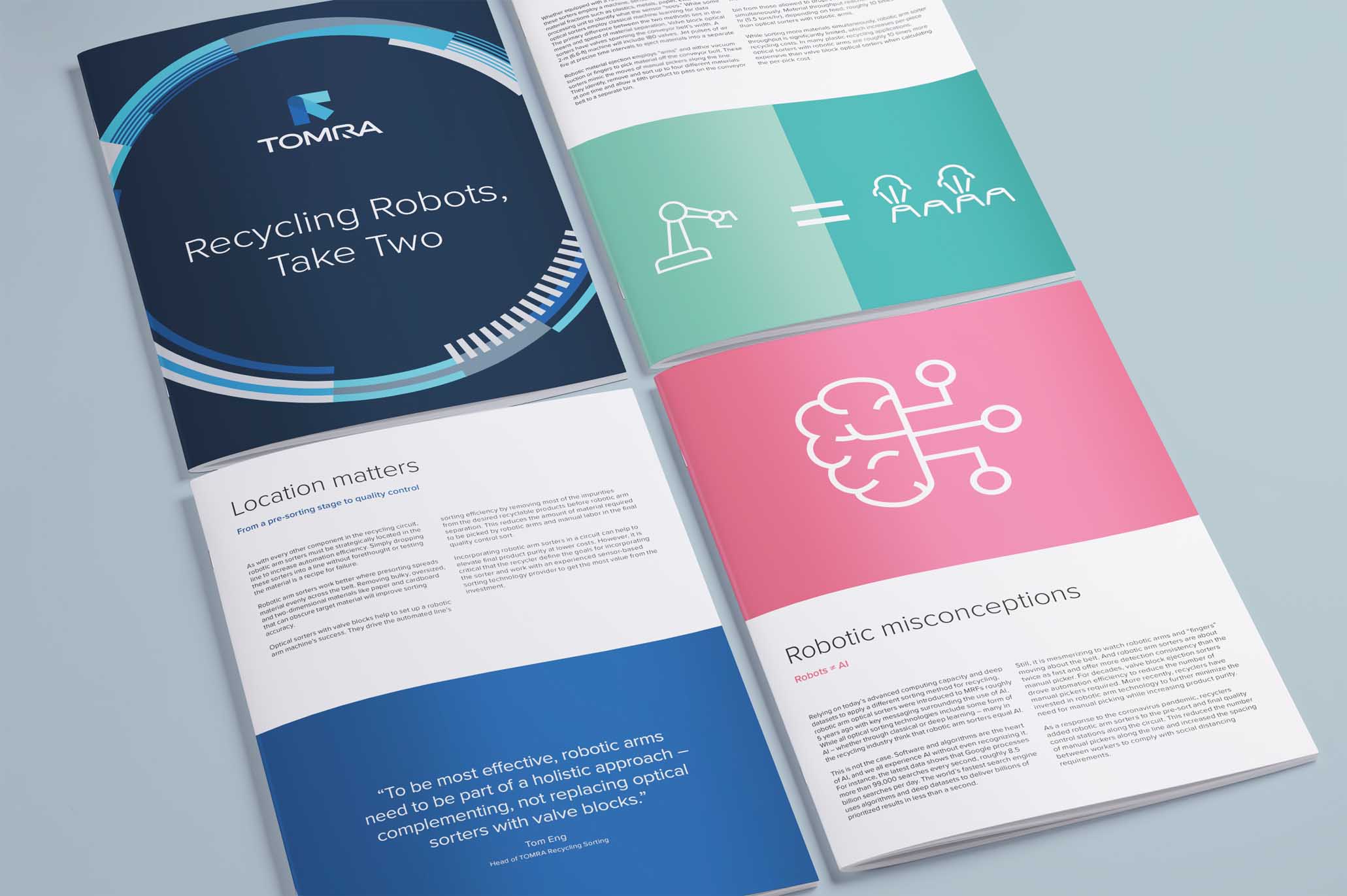
Selecting the right mix of optical sorters with robotic arm and valve block ejectors delivers two powerful robot options to boost recovery of wanted materials
Today, robotic technology is rapidly evolving in the recycling industry, especially with optical sorting equipment. Drawing from deep datasets, optical sorters using different ejection methods process material fractions more efficiently and with higher purity rates than at any other time. But what exactly constitutes a robot in the recycling industry and how do these machines leverage the deep learning subset of Artificial Intelligence (AI) to benefit today’s recycling facilities?
“Recycling Robots, Take Two,” the latest eBook from TOMRA Recycling, the global leader in sensor-based sorting, explains the similarities and differences between optical sorters with valve block and robotic arm ejectors and details how, when implemented as part of the holistic system design, both can be used complementary to improve plant sorting performance. It describes what is at the heart of AI, how everyone experiences it every day and opens the reader’s mind to recognize the term “robot sorter” is not just a machine with sorting arms.
Readers also learn the four critical components shared by all optical sorters, what different sorting technologies are available for the recycler’s toolbox, and software’s role in sorting. Processing software, in particular, is critical to the sorting process, and it should be developed specifically for the type of sorting technology employed, so the recycler can maximize material recovery.
The eBook concludes with the message that, while not new to the recycling industry, the use of AI and deep datasets is expanding, which is helping to increase material processing speed, achieve higher recovery rates of the most complex material fractions, and maximize circularity by bringing more high-quality recyclates into the loop. Together, optical sorters – both with valve block as well as robotic arm ejectors – allow the workforce to be used more efficiently to lower overall operating costs for the recycler. To be most effective, however, these sorters must be positioned in the line as part of a holistic approach to the automated circuit.
To download a copy of the new TOMRA eBook on robots, please visit: https://www.tomra.com/en/discover/waste-metal-recycling/download/robotic-ebook
About TOMRA
TOMRA Recycling designs and manufactures sensor-based sorting technologies for the global recycling and waste management industry to transform resource recovery and create value in waste.
The company was the first to develop advanced waste and metals sorting applications use high capacity near infrared (NIR) technology to extract the most value from resources and keep materials in a loop of use and reuse. To date, more than 8,200 systems have been installed in 100 countries worldwide.
TOMRA Recycling is a division of TOMRA Group. TOMRA was founded on an innovation in 1972 that began with the design, manufacturing and sale of reverse vending machines (RVMs) for automated collection of used beverage containers.
Today, TOMRA is leading the resource revolution to transform how the planet’s resources are obtained, used and reused to enable a world without waste. The company’s other business divisions are TOMRA Food and TOMRA Collection.
TOMRA has approximately 100,000 installations in over 80 markets worldwide and had total revenues of ~10.9 billion NOK in 2021. The Group employs ~4,600 globally and is publicly listed on the Oslo Stock Exchange. The company headquarters are in Asker, Norway.
For further information about TOMRA, visit www.tomra.com.